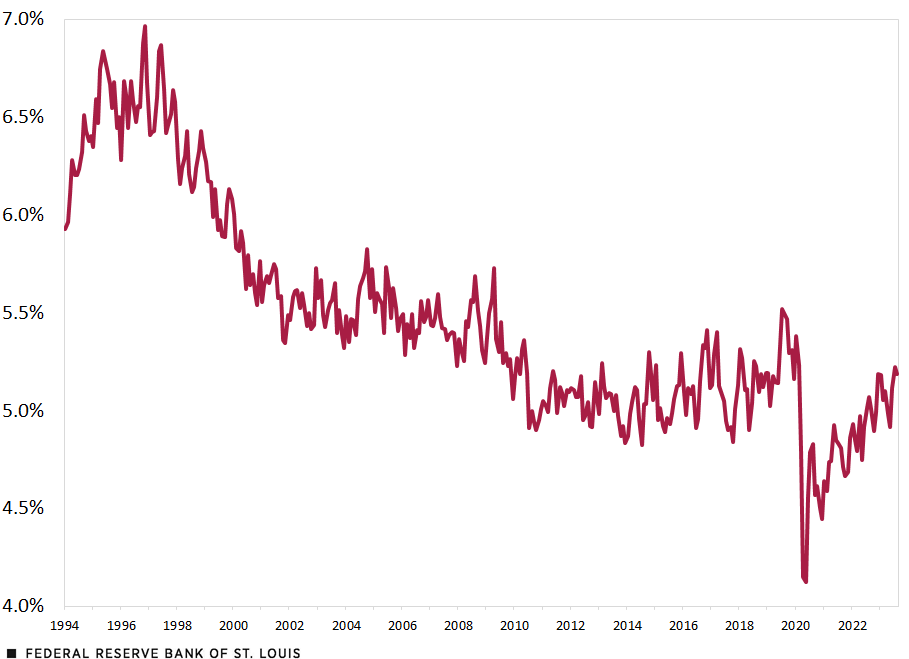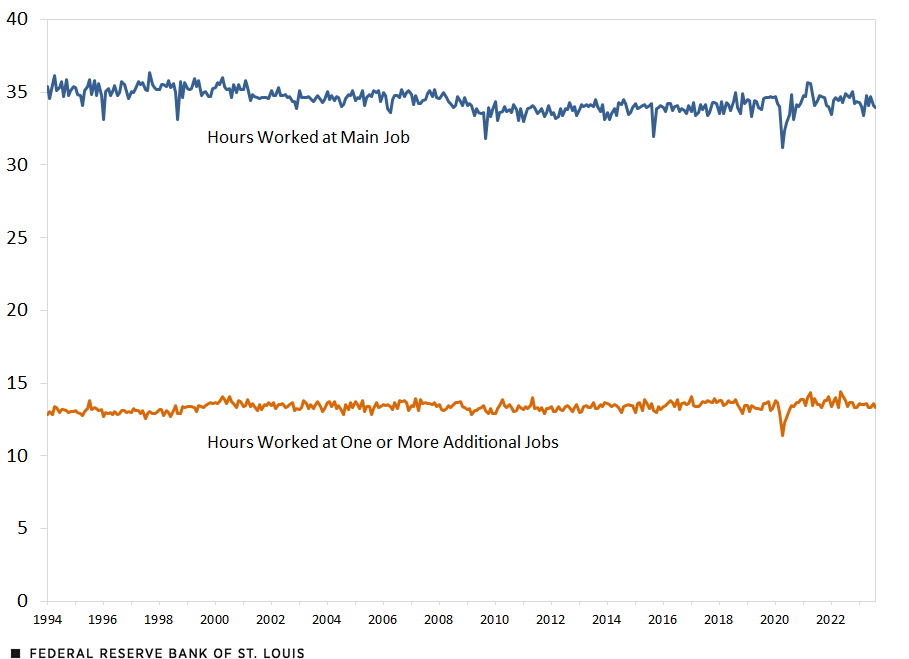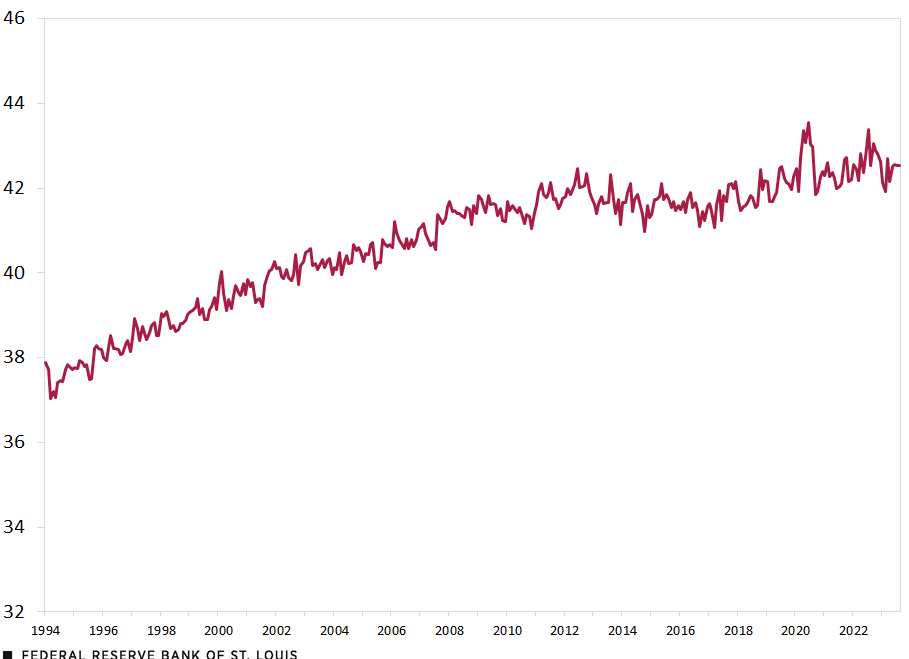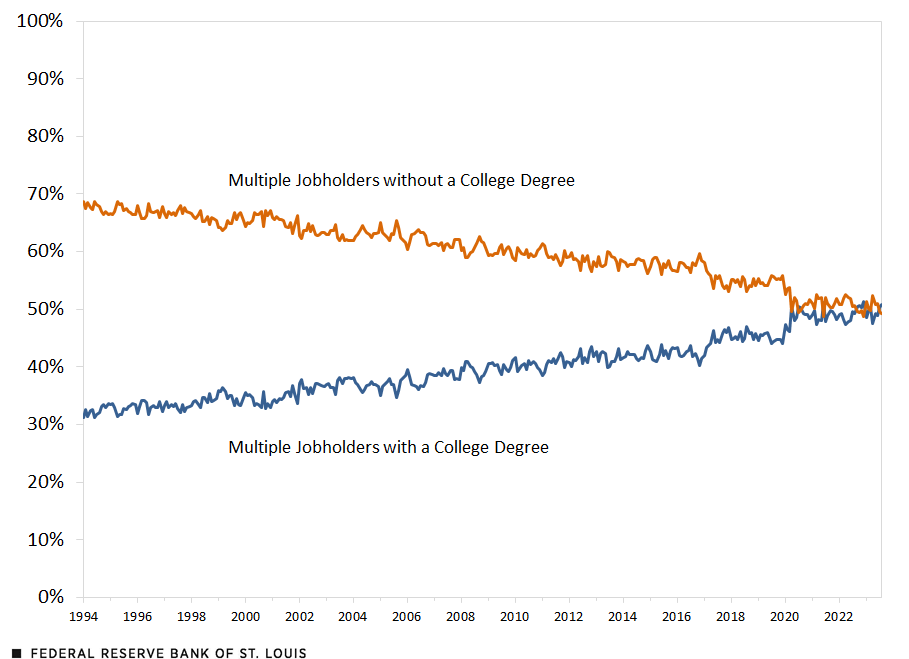Overemployed Workers? Trends on Multiple Jobholders
The U.S. economy is experiencing one of the tightest labor markets in its history. This condition has been shaped not only by a confluence of factors that emerged out of the pandemic labor market but also by demographic trends, such as the retirement of baby boomers and recent changes in migration patterns.
While the total number of workers is somewhat limited, laborers can be overemployed by working multiple jobs. From our perspective, the notion of overemployment refers to individuals who have a full-time job and work additional hours for another employer. Notice that this definition would not apply to those working overtime for a single employer.
The latent capacity of overemployment can sustain a tight labor market for longer. This is because workers who are currently employed are working longer hours in total, but for different employers, potentially filling jobs in occupations that do not need full-time employees.
Benefits and Costs of Overemployment
There are a number of reasons why workers may choose to hold multiple jobs. Some workers may be motivated by financial reasons, such as saving up for a down payment on a house or paying off debt. Others may be looking for more flexibility or the opportunity to pursue multiple passions. For example, a software engineer may work a full-time job at a large tech company but also start a freelance business on the side.
Overemployment can have a number of benefits, both for workers and for employers, as well as drawbacks. For workers, overemployment can provide a way to increase their income, gain new skills and experience, and have more flexibility. For employers, overemployment can help to fill open positions and meet staffing needs. On the negative side, it can be difficult to balance multiple jobs and maintain a healthy work-life balance. Workers with multiple jobs may also be at risk of burnout and other health problems. For employers, multiple job holders may be less productive and more likely to make mistakes.
How Common Is Overemployment?
How prevalent is overemployment in this year’s tight labor market, which has seen the lowest unemployment rate since 1969? A simple way to address this question would be to ask people, and this is precisely what the Current Population Survey (CPS) has been doing since 1994. For currently employed workers, the survey asks the individuals if they have worked more than one job in the past week. It also asks the number of hours worked last week at the main job and at other jobs.
The fraction of employed people with more than one job, as shown in the figure below, has fallen since 1996, declining from a peak of 7.0% in November 1996 to 5.2% in August 2023. At the onset of the pandemic, it declined to around 4% but has since recovered to pre-pandemic levels.
Percentage of Employed People with More Than One Job

SOURCES: Current Population Survey and authors’ calculations.
How about the number of hours worked by the overemployed in each job? The blue line in the figure below presents the average weekly hours worked at the main job, while the orange line plots the hours worked at other jobs.
Multiple jobholders worked around an average of 35 hours in a week at their main job, which is very close to the average weekly hours of all employed workers. But they also worked an average of 13.5 hours in a week at other jobs. Both of these averages have not experienced significant changes in the last three decades.
Average Weekly Hours Worked by Multiple Jobholders

SOURCES: Current Population Survey and authors’ calculations.
Demographics of Multiple Jobholders
The CPS data also give us more information about who these workers are. In terms of demographics, the average age of multiple jobholders has been increasing fairly steady for the past three decades, in line with the aging of the population. See the figure below.
The largest increase—from about 38 to about 42 years old—happened between 1994 and 2012. Since then, the average age has fluctuated, reaching about 43 years old in 2022 and hovering around 42.5 years old in recent months.
Average Age of Multiple Jobholders

SOURCES: Current Population Survey and authors’ calculations.
Perhaps more strictly, we observe that the fraction of multiple jobholders with a college degree has been increasing, while the fraction of multiple jobholders without a college degree has been decreasing over the same period, as shown in the figure below. The pandemic was the tipping point in which the shares of multiple jobholders in each group became nearly identical to each other. As a result, currently, around 50% of the multiple jobholders have a college degree.
Composition of Multiple Jobholders by Education

SOURCES: Current Population Survey and authors’ calculations.
Summary of Trends on Multiple Jobholders
Our findings show that the tight labor market during the recovery from the COVID-19 recession was accompanied by a recovery in the share of multiple jobholders among the employed to its early 2020 level. However, multiple jobholders did not experience much change in their allocation of hours worked between their main job and other jobs during this period.
The effects of overemployment on wage dynamics are complex. On the one hand, overemployment can increase the availability of hours, which could reduce wages. On the other hand, it may require higher wages to attract workers to work more hours. This is an area of future study.
Citation
Serdar Birinci and Carlos Garriga, ldquoOveremployed Workers? Trends on Multiple Jobholders,rdquo St. Louis Fed On the Economy, Nov. 6, 2023.
This blog offers commentary, analysis and data from our economists and experts. Views expressed are not necessarily those of the St. Louis Fed or Federal Reserve System.
Email Us
All other blog-related questions



